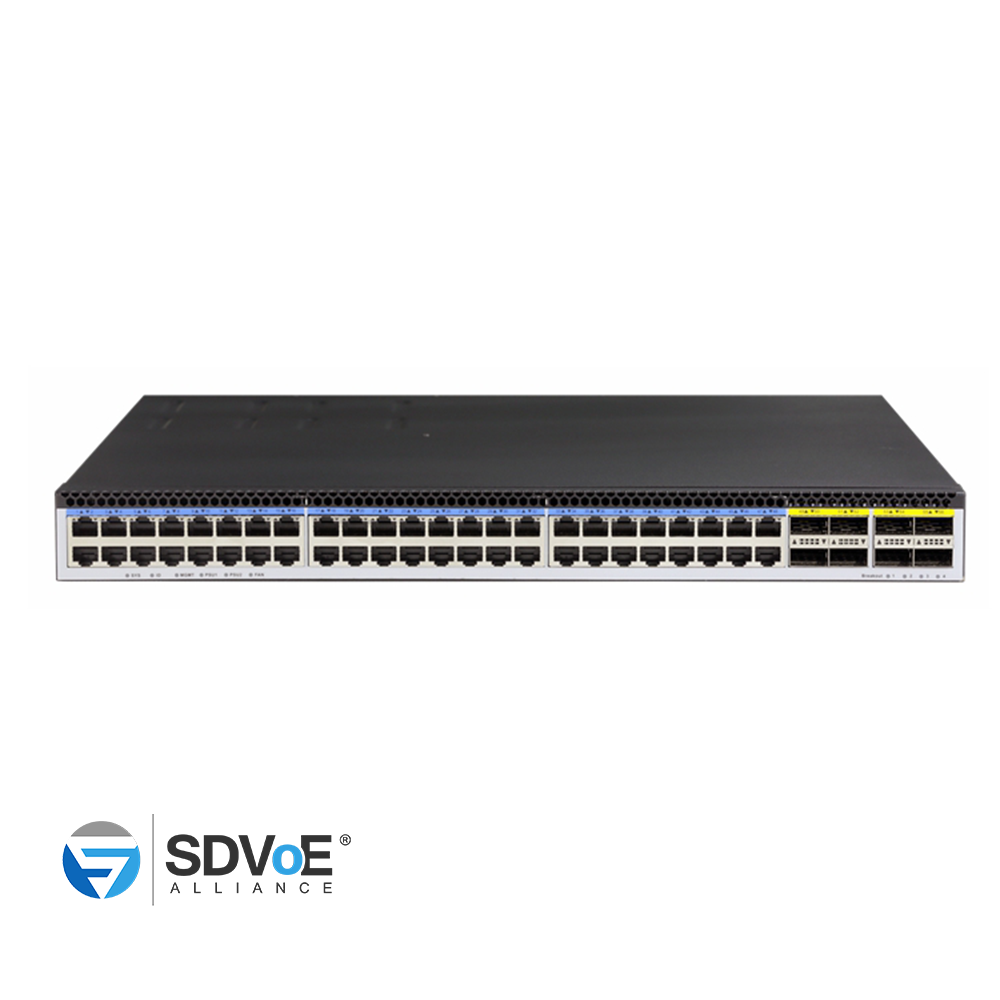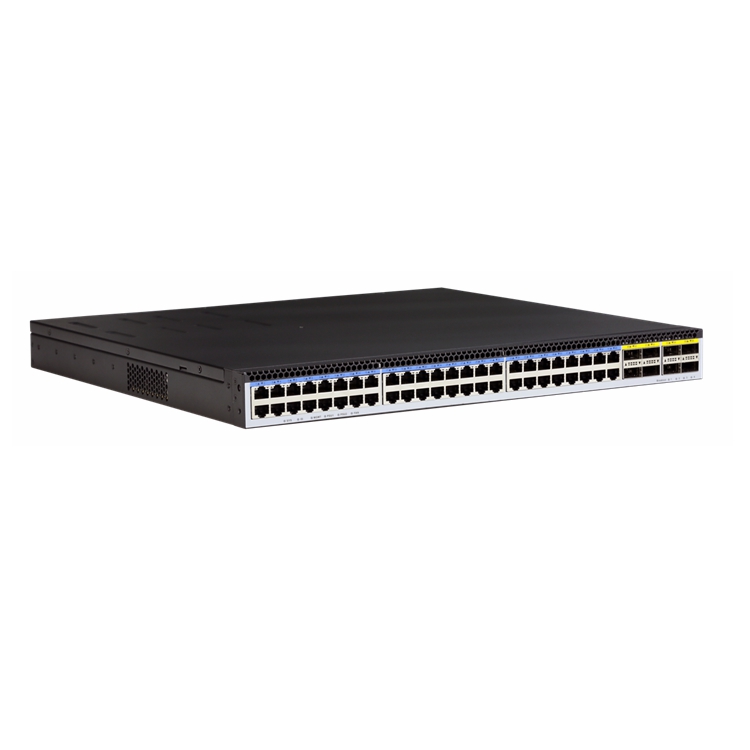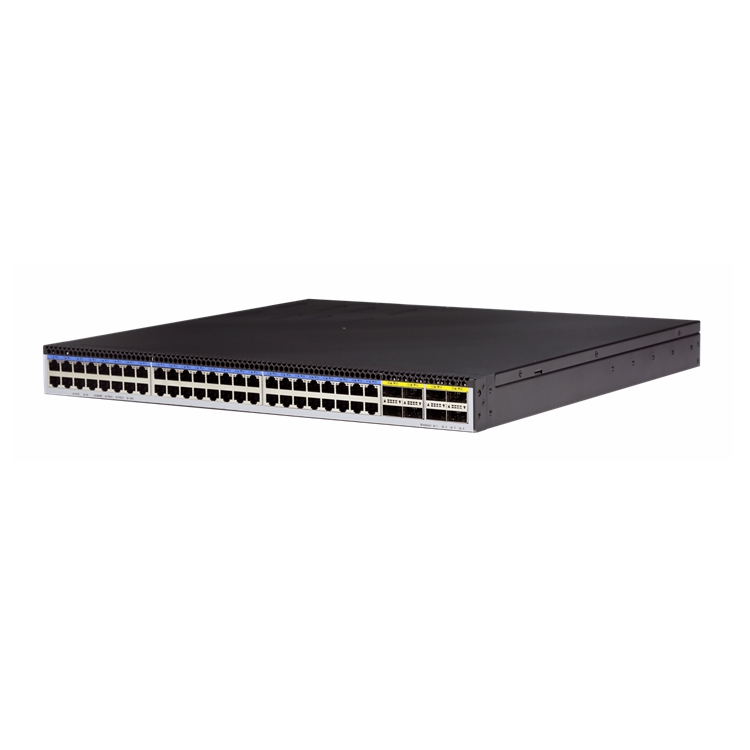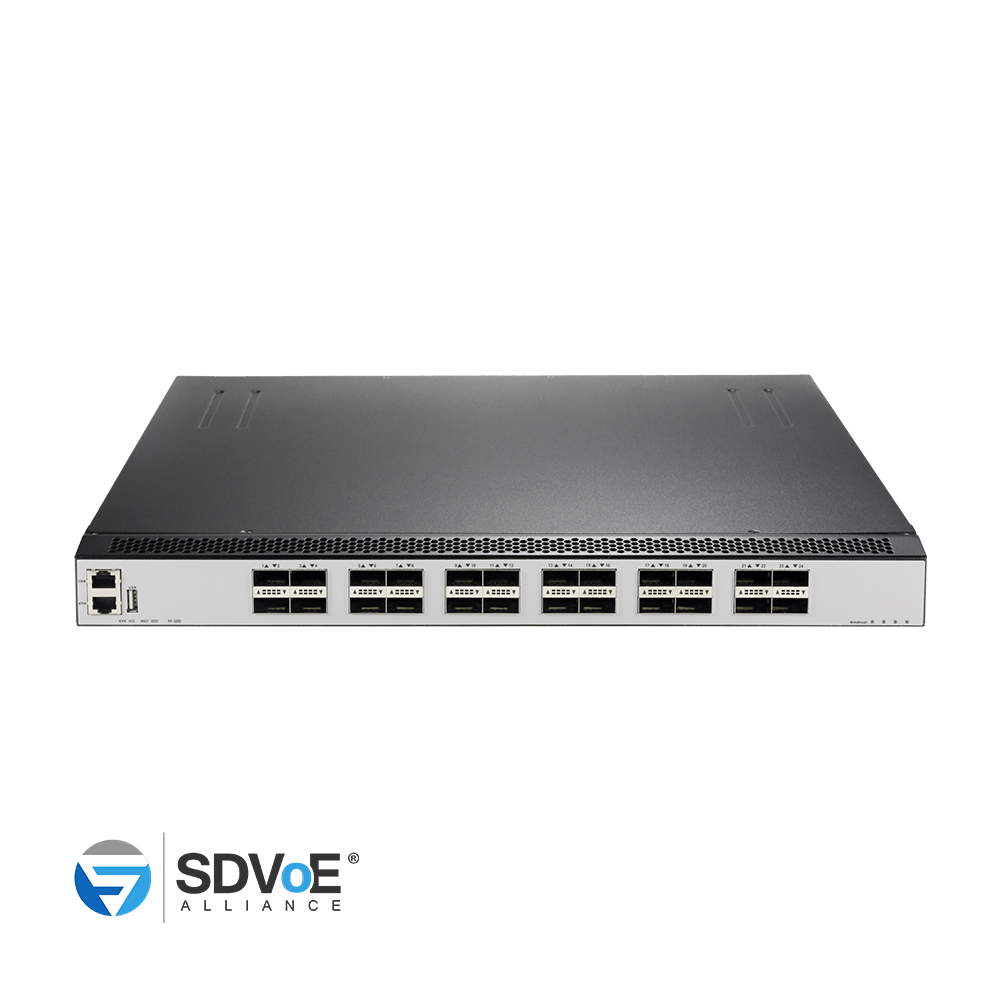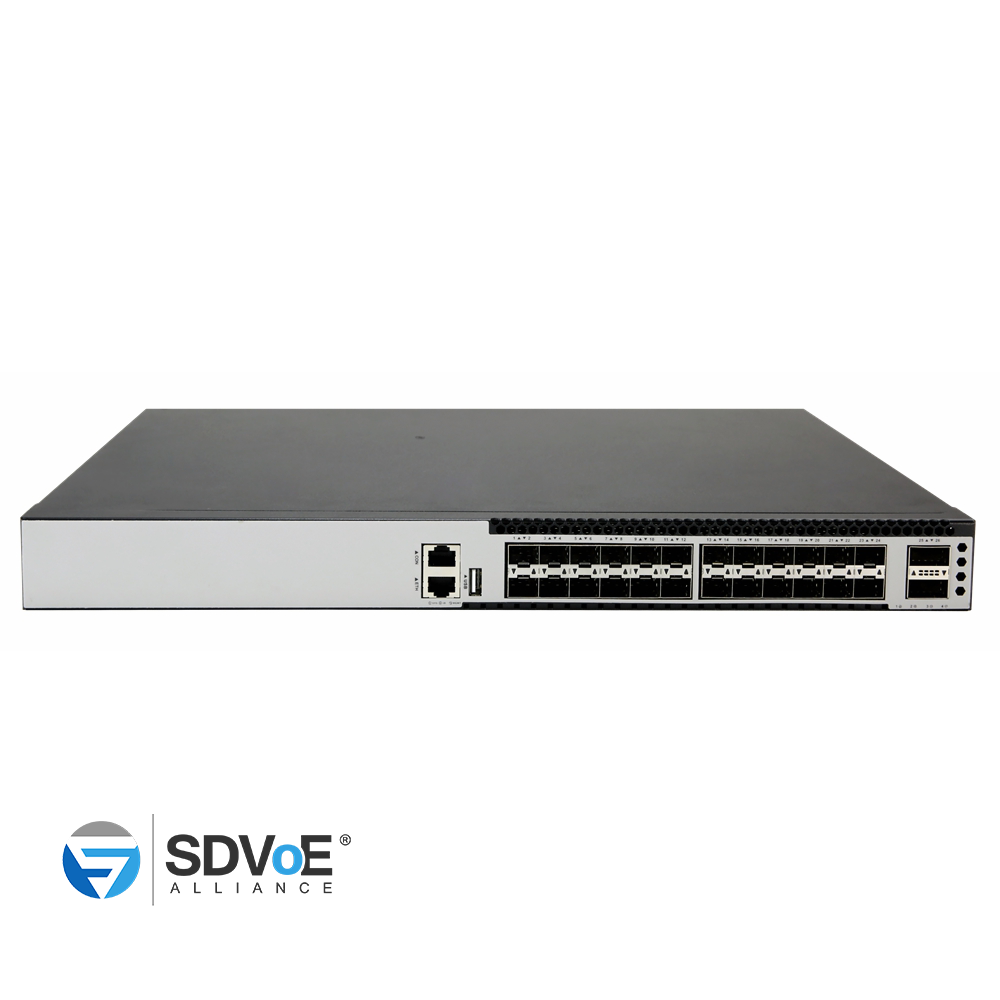| 软件特性 |
●支持
○ 不支持 |
| 功能 |
描述 |
MS软件许可证 |
MA软件许可证 |
| 类型 |
子类型 |
特性 |
| Ethernet basic features |
Ethernet |
interface |
Ethernet interface operating modes(full duplex, half duplex, and auto- |
● |
● |
| negotiation) |
| Ethernet interface operating rates |
● |
● |
| Jumbo Frame |
● |
● |
| port-xconnect |
● |
● |
| Flow-control |
Flow-control tx/rx |
● |
● |
| storm-control |
Port based storm-control |
● |
● |
| VLAN based storm-control |
● |
● |
| Port-block |
Port-block(know/unknown unicast; know/unknown multicast/broadcast) |
● |
● |
| Port-isolate |
L2/L3/All Port-isolate |
● |
● |
| Uni-direction isolate |
● |
● |
| L2 Protocol Tunnel |
L2 Protocol Tunnel(support CDP/CFM/DOT1X/LLDP/SLOW-PROTO/STP/VTP |
● |
● |
| Forward mode |
Store-and-forward |
● |
● |
| Cut-through |
● |
● |
| VLAN |
VLAN Access mode |
Access/Trunk |
● |
● |
| Default VLAN |
● |
● |
| VLAN Classification |
VLAN Classification(port based/mac based/IP based/protocol based) |
● |
● |
| QinQ |
Basic QinQ |
● |
● |
| Selective QinQ |
● |
● |
| VLAN Mapping(1:1 VLAN Translation) |
● |
● |
| VLAN Statistics |
VLAN Statistics |
● |
● |
| Private VLAN |
Private VLAN |
● |
● |
| Voice VLAN |
Voice VLAN |
● |
● |
| Guest VLAN |
Guest VLAN |
● |
● |
| MAC |
MAC Address Table |
Automatic learning and aging of MAC addresses |
● |
● |
| Hardware Learning |
● |
● |
| Static and dynamic MAC address entries |
● |
● |
| Blackhole MAC |
● |
● |
| MAC Flapping detect |
MAC Flapping detect |
● |
● |
| Port Bridge |
Port Bridge |
● |
● |
| LAG |
Link aggregation |
Static-LAG & LACP |
● |
● |
| LAG load balance(SLB) |
● |
● |
| LAG load balance(DLB) |
● |
● |
| LAG load balance(RR) |
● |
● |
| LAG Self-healing |
● |
● |
| Link aggregation weighting |
● |
● |
| Ethernet Ring protection features |
xSTP |
STP |
Spanning-Tree Protocol |
● |
● |
| RSTP |
Rapid Spanning-Tree Protocol |
● |
● |
| MSTP |
Multi-instance Spanning-Tree Protocol |
● |
● |
| Spanning-Tree Protocol Protection |
BPDU Filter/Guard |
● |
● |
| Root Guard |
● |
● |
| Loop Guard |
● |
● |
| Anti TC-BPDU attack |
● |
● |
| ERPS |
ERPS |
Single ERPS ring |
● |
● |
| tangent ERPS rings |
● |
● |
| intersecting ERPS rings |
● |
● |
| compatible with RRPP |
● |
● |
| G.8031 |
G.8031 |
G.8031(Ethernet Linear Network Protection) |
● |
● |
| G.8032 |
G.8032 |
G.8032 V1 & V2 |
● |
● |
| Single Ring |
● |
● |
| Sub Ring |
● |
● |
| Loop back Detect |
Loop back Detect |
Loop back detection |
● |
● |
| Layer2 Multicast |
Layer2 Multicast |
IGMP Snooping |
IGMPv1/v2/v3 Snooping |
● |
● |
| Fast leave |
● |
● |
| Static IGMP snooping group |
● |
● |
| MVR |
MVR(Multicast VLAN Registration) |
● |
● |
| IPv4 Forwarding |
ARP |
ARP |
Static and dynamic ARP entries |
● |
● |
| Aging of ARP entries |
● |
● |
| Gratuitous ARP |
● |
● |
| ARP proxy |
basic ARP-Proxy |
● |
● |
| local ARP-Proxy |
● |
● |
| IPv4 Unicast Routing |
IPv4 Static Routes |
IPv4 Static Routes |
● |
● |
| Black hole Routes |
● |
● |
| co-work with IP SLA |
● |
● |
| VRF(Virtual Routing and Forwarding) |
● |
● |
| uRPF check |
● |
● |
| RIP |
RIPv1/v2 |
● |
● |
| OSPFv2 |
OSPFv2 |
● |
● |
| IS-IS |
IS-IS |
● |
● |
| BGP |
IBGP |
● |
● |
| EBGP |
● |
● |
| Route policy |
Route-map |
● |
● |
| IPv4 prefix-list |
● |
● |
| PBR |
PBR(Policy-based Routing) |
● |
● |
| ICMP |
ICMP redirect |
● |
● |
| ICMP unreachable |
● |
● |
| ECMP |
ECMP(SLB) |
● |
● |
| ECMP(DLB) |
● |
● |
| ECMP(RR) |
● |
● |
| ECMP Self-healing |
● |
● |
| IP unnumbered |
IP unnumbered |
● |
● |
| IPv4 Multicast Routing |
IGMP |
IGMPv1/v2/v3 |
● |
● |
| IGMP-Proxy |
● |
● |
| IGMP SSM Mapping |
● |
● |
| PIM |
PIM-SM |
● |
● |
| PIM-SSM |
● |
● |
| PIM-DM |
● |
● |
| IPv6 Forwarding |
IPv6 Basic Protocol |
ICMPv6 |
ICMPv6 |
● |
● |
| NDP |
NDP |
● |
● |
| PMTU |
PMTU |
● |
● |
| IPv6 Unicast Routing |
IPv6 Static Routes |
IPv6 Static Routes |
● |
● |
| RIPng |
RIPng |
● |
● |
| BGP4+ |
BGP4+ |
● |
● |
| OSPFv3 |
OSPFv3 |
● |
● |
| IS-IS |
IS-IS |
● |
● |
| VRRP v3 |
VRRP v3 |
● |
● |
| IPv6 Multicast Routing |
MLD v1/v2 |
MLD v1/v2 |
● |
● |
| MLD v1/v2 Snooping |
MLD v1/v2 Snooping |
● |
● |
| MVR6 |
MVR6 |
● |
● |
| PIM-SM v6 |
PIM-SM v6 |
● |
● |
| IP Tunnel |
IPv6 over IPv4 Tunnel |
IPv6 over IPv4 Tunnel |
● |
● |
| 6to4 Tunnel |
6to4 Tunnel |
● |
● |
| ISATAP Tunnel |
ISATAP Tunnel |
● |
● |
| IPv6 Service |
DHCPv6 |
DHCPv6 Relay |
● |
● |
| DHCPv6 Snooping |
● |
● |
| IPv6 Prefix List |
IPv6 Prefix-list |
● |
● |
| Device reliability features |
BFD |
BFD |
BFD for Static route |
● |
● |
| BFD for OSPFv2 |
● |
● |
| BFD for VRRP/Track |
● |
● |
| BFD for PBR |
● |
● |
| VRRP |
VRRP |
VRRP |
● |
● |
| Track for VRRP |
● |
● |
|
Smart Link |
Smart Link |
multi-instance |
● |
● |
| load balance |
● |
● |
| Multi-Link |
● |
● |
| Monitor-link |
● |
● |
| MLAG |
MLAG |
MLAG basic |
● |
● |
| MLAG orphan Port |
● |
● |
| ethernet OAM |
EFM |
EFM (802.3ah) |
Auto detection |
● |
● |
| Network fault detection |
● |
● |
| Network fault handle |
● |
● |
| remote loop back |
● |
● |
| CFM |
CFM (802.1ag) |
Hardware CCM detect |
● |
● |
| MAC Ping |
● |
● |
| MAC Trace |
● |
● |
| Y.1731 |
Y.1731 |
Latency and Jitter measure |
● |
● |
| QoS features |
QoS |
Traffic classification |
Traffic classification based on COS/DSCP (simple classification) |
● |
● |
| Traffic classification based on ACL ( complex classification) |
● |
● |
| Traffic classification based on inner header of the tunnel packets |
● |
● |
| Traffic behaviors |
Queue scheduling |
● |
● |
| Remark the priority fields(COS/DSCP) of the packet based on ACL |
● |
● |
| Remark the priority fields(COS/DSCP) of the packet based on Table Map |
● |
● |
| Flow redirection |
● |
● |
| Flow mirror |
● |
● |
| Traffic policing |
Traffic policing based on direction(in/out) of Port |
● |
● |
| Traffic policing based on direction(in/out) of VLAN |
● |
● |
| Traffic policing based on direction(in/out) of flow |
● |
● |
| Traffic policing based on direction(in/out) of aggregated flow |
● |
● |
| Traffic shaping |
Queue based traffic shaping |
● |
● |
| Port based traffic shaping |
● |
● |
| Congestion management |
SP(Strict Priority)scheduling |
● |
● |
| WDRR(Weighted Deficit Round Robin)scheduling |
● |
● |
| SP + WDRR mixed scheduling |
● |
● |
| Congestion avoidance |
TD(Tail Drop) |
● |
● |
| WRED(Weighted Random Early Detection) |
● |
● |
| Traffic statistics |
Packet counts and bytes statistics based on traffic classification |
● |
● |
| Packet counts and bytes statistics based on the color after traffic policing |
● |
● |
| Forwarded and discarded packet counts and bytes statistics |
● |
● |
| ECN (Explicit congestion |
ECN tags based on Tail Drop |
● |
● |
| notification) |
ECN tags based on WRED |
● |
● |
| Data Center |
VARP |
Virtual gateway |
VARP(Virtual-ARP) |
● |
● |
| VARP subnet |
● |
● |
| Tunnel |
VxLAN |
Manual configure VxLAN tunnel |
● |
● |
| VxLAN distributed gateway |
● |
● |
| VxLAN active-active access |
● |
● |
| Interconnect across Data Centers based on VxLAN |
● |
● |
| L2 Protocol packet pass through |
● |
● |
| Edit DSCP in VxLan outer header |
● |
● |
| BGP EVPN |
○ |
● |
| Support to enable/disable overlay split horizon per-VNI |
● |
● |
| GRE Tunnel |
GRE Tunnel |
● |
● |
| NVGRE Tunnel |
NVGRE Tunnel |
● |
● |
| GENEVE Tunnel |
GENEVE Tunnel |
● |
● |
| DCB |
DCBX |
LLDP support DCBX TLV |
● |
● |
| PFC |
PFC |
● |
● |
| Metro features |
IPRAN |
LDP |
LDP |
○ |
● |
| MPLS Forwarding |
MPLS Forwarding |
○ |
● |
| VPWS |
VPWS |
○ |
● |
| VPLS |
VPLS |
○ |
● |
| MPLS OAM |
MPLS OAM |
○ |
● |
| MPLS Stats |
MPLS Stats |
○ |
● |
| L2VPN |
L2VPN |
○ |
● |
| L3VPN |
L3VPN |
○ |
● |
| ACL |
MPLS ACL |
○ |
● |
| QoS |
MPLS QoS |
○ |
● |
| Security and management |
System Security |
SSH |
SSHv1/v2 |
● |
● |
| RSA Key generation |
● |
● |
| RADIUS |
RADIUS |
● |
● |
| TACAS+ |
TACAS+ |
● |
● |
| AAA |
Authentication |
● |
● |
| Authorization |
● |
● |
| Accounting |
● |
● |
| Dot1x |
Port based dot1x |
● |
● |
| MAC based dot1x |
● |
● |
| Guest VLAN |
● |
● |
| ACL |
MAC/IP ACL |
● |
● |
| Basic Mode ACL |
● |
● |
| Port-group ACL |
● |
● |
| VLAN-group ACL |
● |
● |
| IPv6 ACL |
● |
● |
| ACL UDF |
● |
● |
| Global ACL |
● |
● |
| Time Range |
● |
● |
| ARP Inspection |
ARP Inspection |
● |
● |
| IP Source Guard |
IP Source Guard |
● |
● |
| Port Security |
Limitation on MAC address learning on interface |
● |
● |
| VLAN Security |
Limitation on MAC address learning on VLAN |
● |
● |
| Control Plane Policy (COPP) |
Black list/wihte list |
● |
● |
| Rate limit |
● |
● |
| CPU Traffic Limit |
CPU Traffic Limit |
● |
● |
| Prevent DDOS attack |
Prevent DDOS attack (ICMP Flood/Smurf/Fraggle/LAND/SYN Flood) |
● |
● |
| Login filter |
Telnet/SSH ACL filtering |
● |
● |
| Telnet/SSH IPv6 ACL filtering |
● |
● |
| Link-Flapping detection |
Link-Flapping detection |
● |
● |
| Network Management |
DHCP |
DHCP Server |
● |
● |
| DHCP Relay |
● |
● |
| DHCP Snooping |
● |
● |
| DHCP Client |
● |
● |
| DHCP Option82 |
● |
● |
| DHCP Option252 |
● |
● |
| RMON |
RMON |
● |
● |
| sFlow |
sFlow v4/v5 |
● |
● |
| IP SLA |
IP SLA |
● |
● |
| IPFIX |
IPFIX |
● |
● |
| Latency/Buffer Monitor |
Latency Monitor |
● |
● |
| Buffer Monitor |
● |
● |
| EFD |
Elephant Flow Detection |
● |
● |
| NTP |
NTP(Network Time Protocol) |
● |
● |
| Err-disable |
Err-disable detection and recovery |
● |
● |
| DNS |
Static DNS Client |
● |
● |
| LLDP |
LLDP |
● |
● |
|
Terminal Services |
Command Line Interface |
Configurations through CLI (Command Line Interface) |
● |
● |
| Help information |
Banner configuration |
● |
● |
| Help information in English |
● |
● |
| Terminal service |
Vty Terminal service |
● |
● |
| Console Terminal service |
● |
● |
|
Management interface |
In-band management interface and configuration |
● |
● |
| Out-band management interface and configuration |
● |
● |
| User privilege management |
privileged user proirity and privileged commands |
● |
● |
| Configuration and maintenance |
Configuration Management |
SNMP |
Network management based on SNMPv1/v2c/v3 |
● |
● |
| Public and private MIB |
● |
● |
| Public and private Trap |
● |
● |
| WEB |
Configuration and management based on WEB UI |
● |
● |
| RPC-API |
Configuration and management based on RPC-API |
● |
● |
| Smart Config |
Smart Config(Automatically configuration when system start) |
● |
● |
| OVSDB |
Configuration and management based on OVSDB |
● |
● |
| system profile configuration |
change the system specifications by choose different STM Profiles |
● |
● |
| License control |
Feature configuration based on License |
● |
● |
| Restore factory default |
Restore factory default configuration |
● |
● |
| configuration |
| File System |
File system |
File system(support directory and file management) |
● |
● |
| Upload and download |
Upload and download files through FTP or TFTP |
● |
● |
| Upload and download files through Xmodem |
● |
● |
| Debugging And Maintenance |
Debug |
per-module Debug features |
● |
● |
| ICMP Debug |
● |
● |
| BHM |
Software process monitor: BHM(Beat Heart Monitor) |
● |
● |
| Hardware Watch Dog |
● |
● |
| Log & alarm |
CPU usage display and alarm |
● |
● |
| Memory usage display and alarm |
● |
● |
| Device temperature, PSU, FAN, status display and alarm |
● |
● |
| User operation logs |
● |
● |
| Management of logs, alarms, and debugging information |
● |
● |
| VCT |
VCT(Virtual Cable Test) |
● |
● |
| system diagnostics |
Detailed Diagnostic-information collection |
● |
● |
| Reboot |
Manual reboot |
● |
● |
| Schedule Reboot |
● |
● |
| Reboot Information logging |
● |
● |
| network diagnostics |
Ping |
● |
● |
| IPv6 Ping |
● |
● |
| Trace route |
● |
● |
| mirror |
Port mirror |
● |
● |
| Flow mirror |
● |
● |
| Remote mirror |
● |
● |
| Multi-destination mirror(m:n) |
● |
● |
| Use CPU as mirror source |
● |
● |
| Use CPU as mirror destination and analyze packet |
● |
● |
| ERSPAN |
● |
● |
| CPU statistics |
To CPU/From CPU packets statistics |
● |
● |
| L2 Ping |
layer2 network connectivity detection – L2Ping (MAC Ping/Trace) |
● |
● |
| UDLD |
UDLD(Unidirectional Link Detection) |
● |
● |
| unidirectional |
unidirectional forwarding of the fiber |
● |
● |
| Loop back |
port loop back |
● |
● |
| hardware loop back(internal/external) |
● |
● |
| System time |
Time configuration |
● |
● |
| Timezone |
● |
● |

